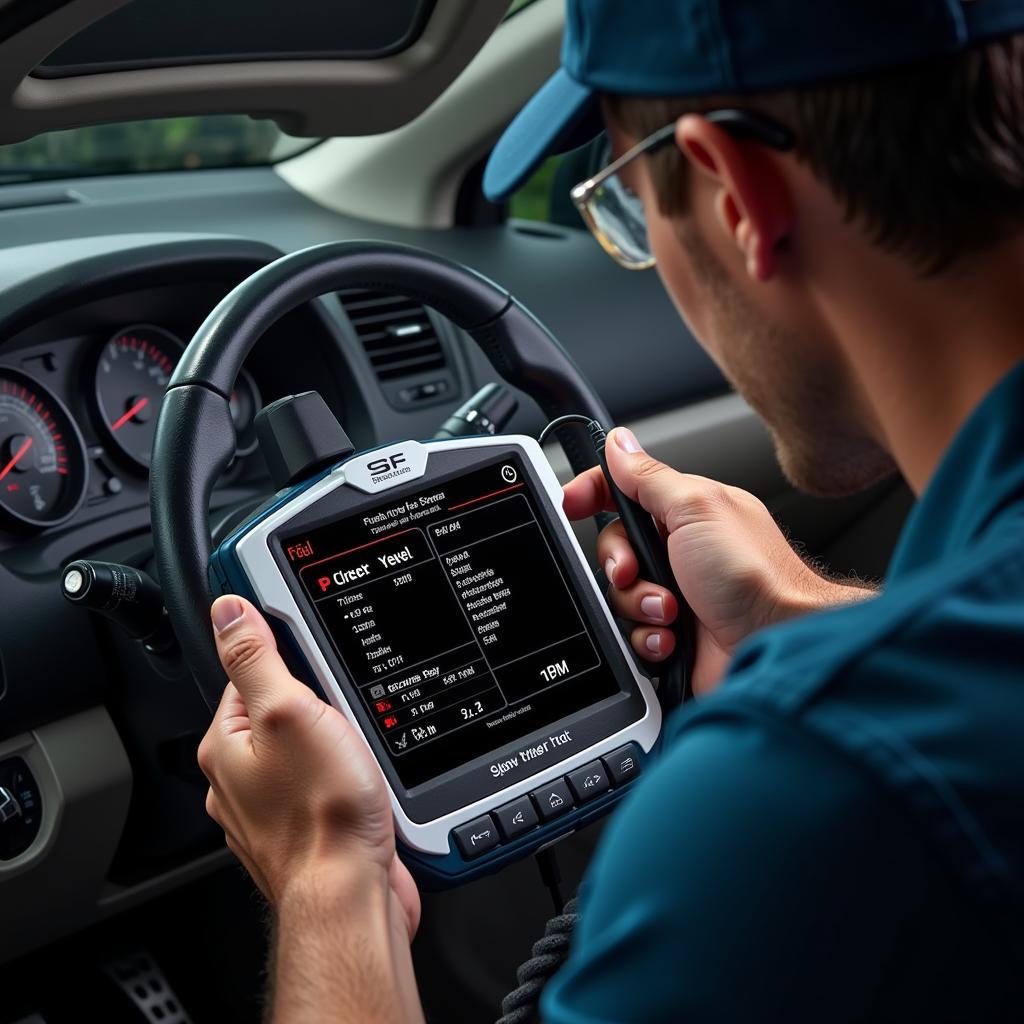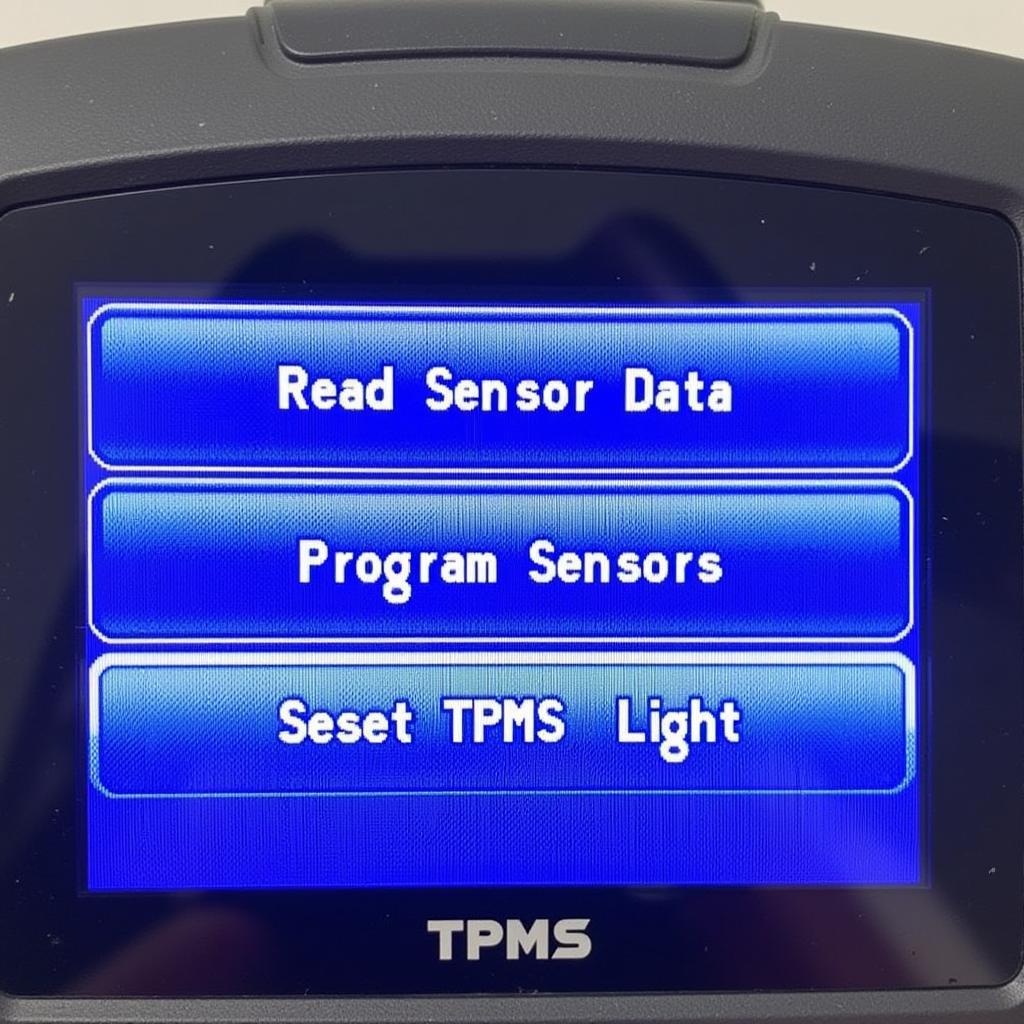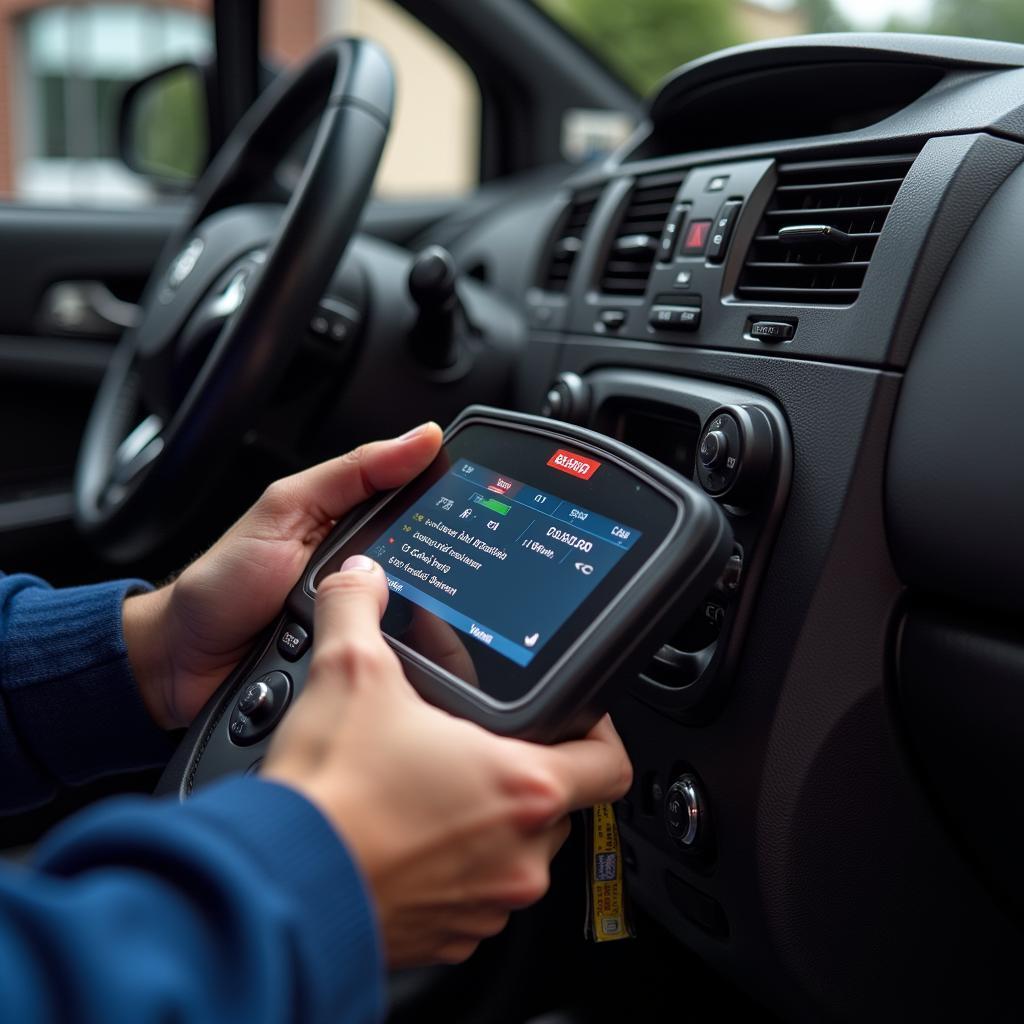Checking fuel pressure is crucial for diagnosing various vehicle performance issues. A scan tool, while not directly measuring pressure, can offer valuable insights into fuel system performance. This guide explores how to use a scan tool effectively for checking fuel pressure, providing tips and tricks for both DIYers and professional mechanics.
Are you struggling with a rough idle, poor acceleration, or decreased fuel economy? These symptoms can often point to fuel delivery problems. While a mechanical fuel pressure gauge remains the most accurate method, a scan tool offers a quick and convenient preliminary assessment. You can even learn about calibrating vanos solenoids with a scan tools like the schwaben scan tool vanos solenoid calibration. Let’s delve into how you can leverage your scan tool for this essential diagnostic step.
Understanding the Role of a Scan Tool in Fuel Pressure Diagnosis
A scan tool doesn’t directly measure fuel pressure like a mechanical gauge. Instead, it accesses data from the vehicle’s Powertrain Control Module (PCM), providing indirect indicators of fuel system health. This information can help pinpoint potential fuel pressure problems, guiding further diagnosis with a mechanical gauge.
Key Scan Tool Parameters for Fuel Pressure Analysis
Several parameters accessible through a scan tool can shed light on fuel pressure issues. These include:
- Fuel Rail Pressure Sensor (FRP) Readings: This sensor provides real-time data on the pressure within the fuel rail. Significant deviations from the manufacturer’s specified range can indicate a problem.
- Short-Term and Long-Term Fuel Trims: These values represent the PCM’s adjustments to fuel delivery. Consistently high positive fuel trims suggest the engine is running lean, possibly due to low fuel pressure.
- Oxygen Sensor (O2) Readings: O2 sensors monitor the exhaust gases and provide feedback to the PCM. Lean conditions, often related to low fuel pressure, will be reflected in O2 sensor data.
- Fuel Pump Duty Cycle: This parameter shows the percentage of time the fuel pump is operating. A constantly high duty cycle might indicate the pump is struggling to maintain pressure.
- Engine Speed (RPM): Observing fuel-related parameters in relation to RPM can highlight specific issues, such as pressure drops at higher engine speeds.
 Checking Fuel Pressure with Scan Tool Dashboard
Checking Fuel Pressure with Scan Tool Dashboard
How to Check Fuel Pressure with a Scan Tool: A Step-by-Step Guide
- Connect the scan tool: Plug the scan tool into the vehicle’s OBD-II port.
- Turn the ignition on: Turn the key to the “on” position without starting the engine.
- Access live data: Navigate to the “live data” or “data stream” section of the scan tool’s menu.
- Select relevant parameters: Choose the parameters mentioned earlier (FRP, fuel trims, O2 readings, fuel pump duty cycle, RPM).
- Observe the readings: Monitor the values displayed for each parameter, comparing them to the manufacturer’s specifications.
- Interpret the data: Look for deviations from normal values. For example, consistently high positive fuel trims coupled with low FRP readings suggest low fuel pressure.
If you are dealing with European cars, you may need a specialized scanner. Check out our recommendations for the best obd scanner for european cars.
Interpreting Scan Tool Data and Next Steps
Interpreting scan tool data requires understanding the interplay between different parameters. For instance, high fuel trims combined with normal O2 readings could point to a vacuum leak rather than a fuel pressure problem.
“A scan tool is a powerful diagnostic tool, but it’s important to remember it’s just one piece of the puzzle,” says John Miller, ASE Certified Master Technician. “It provides clues, but a mechanical fuel pressure test is essential for confirming low fuel pressure.”
Common Fuel Pressure Issues and Scan Tool Insights
- Failing Fuel Pump: A consistently high fuel pump duty cycle and low FRP readings at higher RPMs often suggest a weakening fuel pump.
- Clogged Fuel Filter: Similar symptoms to a failing fuel pump can also indicate a clogged fuel filter restricting fuel flow.
- Leaky Fuel Injectors: While not directly related to fuel pressure, leaky injectors can cause rich conditions, affecting fuel trim values and O2 sensor readings. Understanding this interplay is vital for accurate diagnosis. You can even use a scan tool to test other components, like the EGR valve, as described in our guide on testing egr valve with scan tool.
“Never underestimate the importance of checking fuel pressure,” advises Sarah Chen, Automotive Engineer. “It’s a fundamental step in diagnosing a wide range of performance issues.”
Conclusion
Checking fuel pressure with a scan tool is a valuable preliminary diagnostic step. While it doesn’t replace a mechanical gauge, it provides crucial insights into the fuel system’s performance. By understanding the relevant parameters and interpreting the data correctly, you can effectively pinpoint potential fuel pressure problems and guide further diagnosis. Need help with your automotive diagnostics? Contact ScanToolUS at +1 (641) 206-8880 or visit our office at 1615 S Laramie Ave, Cicero, IL 60804, USA.
You might also find our article on craftsman 1655 scan tool useful for additional information. Another valuable resource is our guide on using scan tools for GM variable cam timing, which you can find here: gm variable cam timing with scan tool pids.



